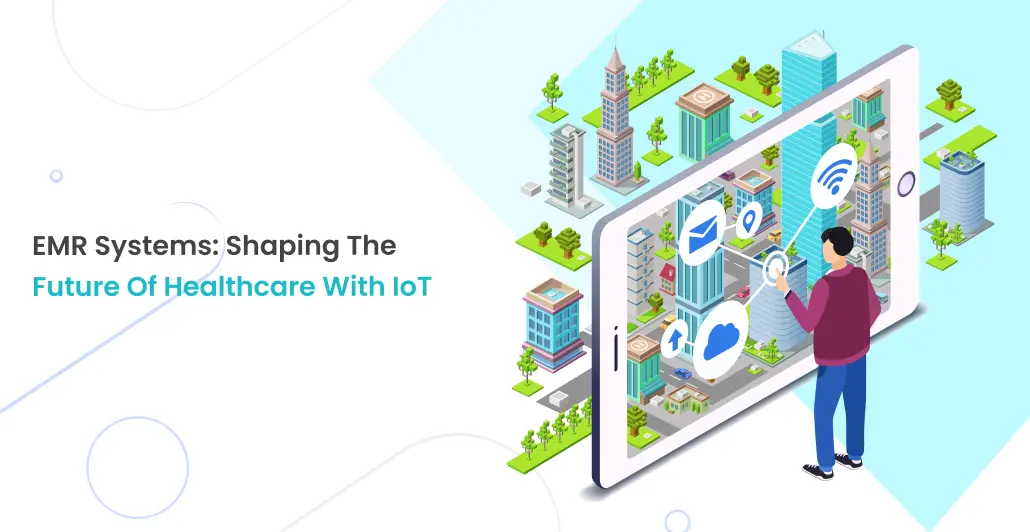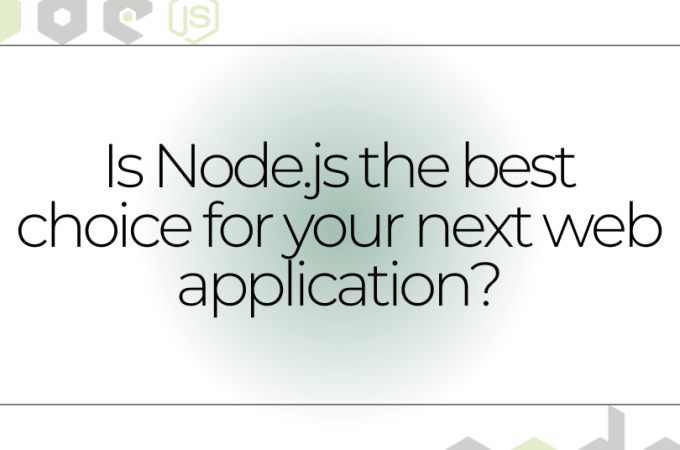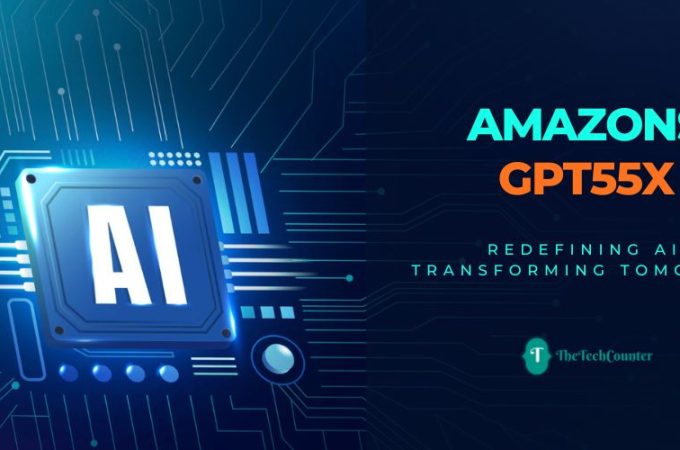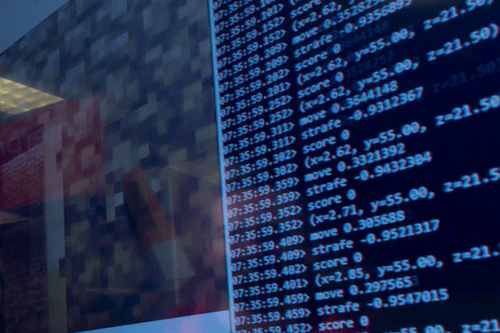
EMR Systems: Shaping the Future of Healthcare with IoT
EMR Software has transformed healthcare as a system; it has digitalized the patients’ records, hence ensuring that the workflows become efficient as well as taking further improvements in the whole process. Healthcare technology advancement has taken a new step into EMR systems through the incorporation of IoT. In health, the integration promises to revolutionize the way health providers perceive patient data, manage care, and create work process efficiency.
Table of Contents
ToggleThe Emergence of EMR Software
From the very beginning, EMR Software has been working toward making healthcare procedures digital by doing away with paper-based systems and access. The best EMR software was designed just to record information about the patients, but it was developed into those with clinical decision support, e-prescribing, and analytics. However, today, integration into the more recent technologies like IoT, AI, and machine learning is the major focus.
Role of IoT in EMR Systems
In health, it may range from wearables, such as fitness trackers, to very complex medical equipment. Therefore, incorporating IoT with EMR systems would ensure that healthcare providers would have access to real-time data they could use to make more informed decisions and give individualized care.
-
Real-time Monitoring
IoT-enabled devices can monitor the heart rate blood pressure and glucose level of a patient in real-time. These pieces of information can be transferred directly to the EMR Software, and physicians will respond to abnormality immediately.
-
Improved Patient Engagement
With an EMR system that patients can connect their wearable devices to, patients will observe their health metrics. Ownership and active health management are thus increased.
-
Operational Efficiency:
IoT integration minimizes the entry of data manually, hence errors are reduced and health staff are free to take care of patients. This is highly useful in an EMR system hospital setting.
-
Data-Driven Insights:
The data collected from IoT devices can enable the understanding of trends predict health risks and optimize treatment outcomes. The EMR Software companies use it to enhance their solutions and provide superior services.
Challenges While Integrating IoT with EMR Software
The scope of benefits is very considerable, but challenges still exist when IoT is integrated with solutions for EMR Software:
-
Data Security:
IoT devices have increased the avenues of data breaches. The patient data that is being kept in Electronic Medical Records needs to be safe.
-
Interoperability:
There may be some glitches in the interoperability of the IoT devices with the EMR systems so that data can flow easily from one system to another. Standard protocols are required so that integration becomes easy.
-
Cost:
IoT-integrated EMR Software requires huge investments in infrastructures, training, and maintenance.
Innovations That Shape the Future
The EMR Software Solution with the IoT integration leads to shaping the future where all these challenges are over along with emerging innovations:
-
Artificial Intelligence (AI):
A large amount of data from the IoT will be analyzed by AI systems in order to provide actionable insights and automatically reduce routine tasks in EMR systems.
-
Blockchain Technology:
Blockchain ensures safe data sharing between IoT devices and EMR systems, thus increasing trust and transparency.
-
Cloud-Based EMR Solutions:
The technology enables healthcare providers to remotely access patient records from anywhere, thus enhancing coordination and remote monitoring.
-
Patient-Centric Care Models:
IoT integration means the capability for ongoing monitoring, which means the healthcare provider can move away from being reactive to preventive care.
Emerging Use Cases of IoT in EMR Software
-
Remote Patient Monitoring:
IoT devices enable healthcare professionals to monitor patients with chronic illnesses, such as diabetes or heart disease, from the comfort of their homes. The data smoothly feeds into the EMR systems, which ensures improved care continuity.
-
Smart Hospital Infrastructure:
Hospitals can use IoT-based sensors and equipment to monitor the usage of equipment, optimize energy consumption, and streamline workflow. The insights are captured in the EMR system hospital, which improves the efficiency of operations.
-
Emergency Care Enhancements:
With the IoT, wearable devices will ensure real-time patient information automatically synchronizes with the EMR Software for immediate response to emergencies.
Predictive Analytics in EMR Systems
Predictive analytics is one of the most potent tools coming forward in healthcare with the advancement of IoT. Information acquired by the use of IoT devices will be analyzed to help the EMR Software in the following areas:
- Possible health problems.
- Optimization of utilization of resources in hospitals.
- Providing customized treatment plans, based on historical and real-time data.
Compliance with Regulatory Standards
The IoT devices collect sensitive patient information, so EMR software companies have to be HIPAA compliant. This includes:
- Using strong encryption methods.
- Secure data transmission between IoT devices and EMR systems.
- Software updates regularly to close security holes.
IoT for Enhanced Patient Mobility
IoT devices such as smart wheelchairs and prosthetics can communicate data to EMR systems. This means that the patients are more mobile and independent. The innovation offers:
- Continuous monitoring of device performance
- Real-time alerts about malfunctions or the need for maintenance
- Insight for the healthcare provider about optimizing patient care
Choice of Best EMR Software
With the fast-growing importance of IoT, proper selection of the right EMR Software Solution that allows the integration of IoT is now highly needed. Leading EMR companies are already developing solutions before the priorities of interoperability, scalability, and security in their products. An EMR system hospital specifically tailor-made for a hospital may help hospitals significantly about patient outcomes and organizational efficiency.
IoT can leverage better population health management through this end.
Aggregated data may be used by the Internet of Things device in population health management. Using the EMR system, the providers can help track community-level health trends, help create focused interventions targeting huge health concerns in a specific area, and monitor the effectiveness of public health programs.
What is EMR Software with IoT Integration?
The core of the EMR Software that is connected to IoT is a system that, other than providing digitized records for patients connects with devices to capture real-time data. Such integration gives a holistic view of the health condition of a patient and enables customized treatment plans with better care overall.
IoT integration with EMR bridges the gap between healthcare providers and patients through a continuous flow of data. For instance, athletic monitoring or medical-grade monitoring would take all the patient’s vital statistics regarding heartbeats, oxygen levels, and blood pressure. All this would automatically feed into the EMR system. Through IoT, patient data becomes accessible for use in various domains to enhance coordination. These systems can make the patient aware of his or her health condition, and providers can offer preventive care, reduce hospital readmission, and improve long-term results.
Role of Training and Education
Only through the training of healthcare professionals to make use of these complex technologies can the IoT-integrated EMR system in healthcare become fruitful. The investment of hospitals along with the EMR Software developing companies has to come up with easy usability designs along with extensive training programs to take hold of the technology.
IoT Integrated EMR towards Enhancing Telemedicine
Telemedicine is becoming part of the delivery process in healthcare and integrating with IoT in EMR software brings it closer to the pinnacle potential. IoT devices offer :
- Real-time remote consultation possibilities.
- Easy and efficient transfer of patient vital parameters and diagnostic data across a virtual visit.
- Follow-up care can be improved upon.
Smart Home Healthcare Solutions
IoT-based smart home healthcare solutions expand the scope of EMR systems within the patients’ homes. They encompass:
- Connected medical devices to enable at-home diagnostics
- Environmental sensors to monitor the air quality and falls
- Integration with home assistants that provide reminders for medication and schedule appointments
Predictive Maintenance of Medical Equipment
IoT integration in hospitals can further optimize the maintenance of medical equipment.
- Predictive maintenance-when equipment needs to be serviced.
- Reducing downtime and optimizing operational effectiveness.
- Automatically updating EMR Software with equipment usage statistics.
IoT and EMR in Improving Mental Health Care
IoT and EMR systems play an increasingly crucial role in mental health care. Some innovations include:
- Wearables for tracking stress levels and sleep patterns.
- Integrated mental health picture by incorporating behavioral data into the EMR.
- Communication of patients with mental health care providers will be efficient.
Advanced-Data Visualization Tools in EMR Systems
Data visualization tools, a constituent part of the EMR software, have evolved the method of interpretation for healthcare professionals through insights and findings regarding the patient.
- Real-time monitoring dashboards about the patients.
- Trend and anomaly analytical customized reports.
- User-friendly interfaces to improve the understanding of complex data sets in decision-making.
Future of AI and IoT in EMR Systems
AI and IoT would be an essential feature of EMR Software. Future Innovations would be:
-
Virtual Health Assistants
AI-based chatbots in the EMR software would enable patients to book appointments, check test results, or follow treatment plans.
-
Robotics in Healthcare
IoT-based robotic systems would dispense medicines and update patient data on EMR Software.
-
Smart Wearables:
Future wearables can incorporate technologies to monitor hydration continuously, track neurological activities, and many more integrations within the EMR system.
Conclusion
The integration of IoT with EMR software is not only a step into future technology but a great transition within health delivery systems. Through the resolution of their problems and embracing innovation, healthcare providers can release their full potential. It is, therefore, the EMR systems put in place that will determine the future of healthcare as it address current needs while giving way to a framework of connected, patient-centric care approaches. With all these opportunities for achieving better outcomes for patients and operational excellence being limitless as the EMR software companies continue to innovate and enhance their offerings, the end will never be in sight.




